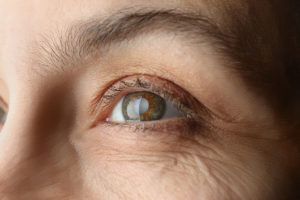How Diabetes Speeds Up the Growth of Cataracts
- Posted on: Nov 7 2023
 November is Diabetic Eye Disease Awareness Month, and many people living with diabetes, as well as their loved ones, are unaware of the dangers high blood sugar pose to their eye health. Long-term uncontrolled diabetes can lead to diabetic retinopathy and diabetic macular edema and increase your risk of early cataract development and glaucoma. Our board-certified ophthalmologist at Pamel Vision & Laser Center has performed more than 20,000 eye surgeries and offers advanced laser cataract surgery.
November is Diabetic Eye Disease Awareness Month, and many people living with diabetes, as well as their loved ones, are unaware of the dangers high blood sugar pose to their eye health. Long-term uncontrolled diabetes can lead to diabetic retinopathy and diabetic macular edema and increase your risk of early cataract development and glaucoma. Our board-certified ophthalmologist at Pamel Vision & Laser Center has performed more than 20,000 eye surgeries and offers advanced laser cataract surgery.
Diabetes Can Lead to Early Cataract Formation
Cataracts form when proteins inside the natural, transparent eye lens clump together, causing an opaque appearance as the cataract grows denser. Most people will have cataracts by their 70s. However, those with diabetes may develop them much earlier in life because high glucose (sugar) levels in the blood can alter the structure of the eye lens and accelerate cataract development.
High blood sugar affects your body in many ways. In your eyes, the extra glucose affects the fluid filling the front of the eye (aqueous humor), which provides nutrients to the eye lens, including oxygen and glucose. Elevated blood glucose also increases the sugar levels inside the aqueous humor and, ultimately, the lens. The excess sugar may cause swelling in the lens and lead to vision changes.
The lens also contains an enzyme called sorbitol that is converted from glucose. Too much sorbitol can cause what’s referred to as sugar cataracts or diabetic cataracts. The sorbitol accumulation causes osmotic stress, leading to the breakdown of the lens integrity and triggering cataract formation.
The longer you live with diabetes, the more likely your eye health will suffer. You may not notice the cataract at first because the clouding of the eye lens is gradual until it reaches the center of the lens and growth speeds up. Keeping your blood sugar within your target range (typically 80-180mg/dL) can help you avoid vision loss and eye disease.
You May Have Additional Risk Factors for Early Cataracts
Diabetes may not be your only risk factor for cataracts; your cataract risk increases if you have a family history of cataracts, previous eye surgery or injury, or repeated eye injections. People taking corticosteroids and other medications may be more likely to have cataracts early in life. Cataracts are also linked to UV exposure, so be sure to wear UV-blocking sunglasses when you’re outside.
Discuss your risk factors with Dr. Gregory Pamel during your comprehensive eye exam at Pamel Vision & Laser Group. Regular eye exams are crucial for people with diabetes to diagnose problems early — before they cause vision loss. While diabetic cataracts are cured with cataract surgery, other eye diseases linked to diabetes cause irreversible vision impairment before you notice symptoms, including glaucoma and diabetic retinopathy.
Laser cataract surgery removes the clouded lens and replaces it with an artificial lens implant. Dr. Pamel offers advanced intraocular lens (IOL) implants that correct refractive errors, such as nearsightedness, farsightedness, astigmatism, and presbyopia.
Learn more about diabetes and eye disease by scheduling an eye exam with Dr. Pamel. Contact our Astoria and New York, New York, offices at (202) 355-2215.
Posted in: Cataract Surgery




